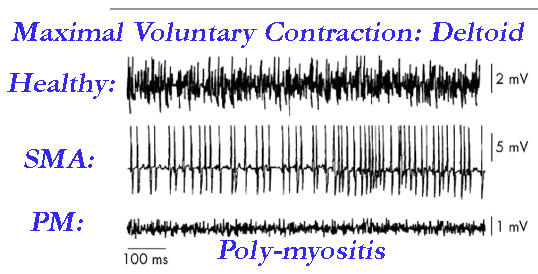M O T O R U N I T R E C R U I T M E N TPatients requested to activate minimally a muscle are usually able to recruit a single or a few motor units. Motor units have a recruitment frequency of 6–10 Hz and are recognisable by the constancy of the waveform of each discharge. A number of parameters of motor unit potentials can be measured; this is achieved by triggering the sweep of an EMG machine by the potential crossing of a threshold and displaying the potential in its entirety. Amplitude, duration, number of phases (changes in direction), and firing rate are useful. When the patient makes a stronger contraction, more motor units are recruited and potentials overlap and interfere with each other; hence this is sometimes referred to as the interference pattern. Recruitment pattern is now the preferred term. At maximal voluntary activation, a full recruitment pattern is produced which fills the baseline. A reduced pattern occurs when despite maximal activation, which of course must be assessed clinically, areas of baseline without activity can still be seen. |
||
 |
  |
|